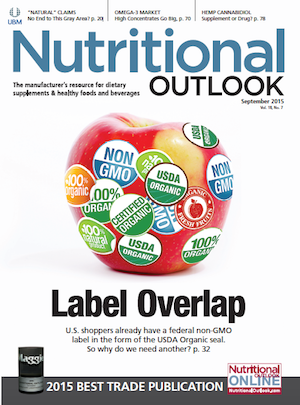Energy Drinks Are Still Going Strong
Energy drinks have continued to exhibit good growth rates in recent years, even against the backdrop of an overall relatively static soft drinks market.


Scanning the shelves today, it’s hard to imagine that there was once a time when energy drinks were not part of the beverage landscape. But while the energy drinks market gained traction early on in Japan and in other parts of Asia, it was only at the dawn of this century when energy drinks really began commanding the attention of the U.S. mainstream soft drinks market. Heavy promotion and expansion by the pioneering Red Bull brand during the decade that followed brought the concept of energy drinks to Western markets for the first time, initially to Europe and then to North America. Fast-forward, and today energy drinks are firmly established within the food and beverage culture.
In the late 1990s, U.S. energy products were most commonly found in the isotonic/sports drinks market. As this category grew stronger, energy drinks emerged as their own, separate standalone category, driven as much by a trendy image as consumers’ desire to boost their energy levels amidst increasingly busy lifestyles.
Current market-size estimates vary depending on the source and how one defines the category, but generally the global energy drinks market is projected to be worth approximately $10 billion annually. Energy drinks have continued to exhibit good growth rates in recent years, even against the backdrop of an overall relatively static soft drinks market.
As of this March, energy drinks accounted for 6.2% of the total U.S. soft drink launches Innova Market Insights recorded. Energy drinks are now growing at a faster rate than the global soft drinks market as a whole, where annual growth is at just under 4%. Red Bull, Monster, and Rockstar are still the leaders. Most of their products are non-aseptic and primarily canned drinks.
New Moves by Market Leaders
Red Bull still leads the energy drinks market both in the U.S. and globally, but critics have questioned the brand’s relatively limited portfolio. With this in mind, Red Bull began expanding its product range in recent years with new launches such as Red Bull Total Zero in 2012, featuring no calories, sugar, or carbohydrates.
Red Bull is also using limited editions to keep consumers engaged. The company introduced Summer Edition Tropical last summer and has since renamed the product Red Bull: The Yellow Edition; in spring 2015, the company made it a permanent brand offering. The drink joined the brand’s already existing Red Bull Red (cranberry) and Red Bull Blue (blueberry). At the same time, Red Bull added Orange and Cherry Editions under the Red Bull Total Zero umbrella.
Red Bull rival Monster Energy launched a Monster Energy Zero edition in the United States in 2012. Marketed as less sweet, lighter tasting, zero-sugar, and zero-calorie, the drink is sweetened with erythritol, sucralose, and acesulfame-K. It joined other “light” versions of Monster, including Monster Energy Lo Carb and Monster Energy Absolutely Zero.
The Monster brand also moved closer to the sports drinks market in recent years, extending its range with performance lines such as Monster Rehab for refreshment, rehydration, and revitalization, and Muscle Monster Energy Shakes with protein. Monster Rehab is based on tea flavors, and Monster also has a Java Monster range of “coffee plus” drinks.
Organic Picks Up
The energy drinks market continues to explore new flavors, formats, and functions, and high levels of competition are resulting in growing segmentation. Marketers are also now focusing on additional benefits such as hydration, endurance, mental focus, immune support, and protein content, bringing the sector more in line with the general health and wellness category.
Marketers should also note ongoing activity in organic energy drinks-most notably by the number-three player in the energy drinks market, Rockstar, which launched the Rockstar Organic Island Fruits drink in 2014 featuring organic sugar and caffeine from organic green coffee beans. More specialized introductions include Mamma Chia’s Chia Vitality energy drinks with chia seeds, guayusa, and fruit juices; Natural Motive’s EnerBee with honey, bee pollen, and royal jelly; and Marquis O3 from Marquis Beverages.
Hybrid Drinks
We are also seeing hybrid soft drinks in other beverage categories now adding an energy element. Take Celsius’s Sparkling carbonated drinks, which include cola, orange, and wild berry. The drinks are marketed not only as “negative-calorie drinks” with ingredients to “increase fat loss, boost energy, and burn more calories,” but also as delivering “lasting energy.”
There is also activity in caffeinated waters, both plain and flavored. Avitae, for example, extended its original line of unflavored natural caffeine waters made with purified water, caffeine from natural green coffee beans, natural flavors, and citric acid. The brand launched a range of four flavored drinks in its Caffeine + Water range early this year.
Meanwhile, Rockstar launched an horchata line in 2014 as a traditional-style, cinnamon-flavored dairy beverage. Another interesting launch last year was Sunny Delight’s SunnyD X range, which leverages the established Sunny D juice drinks brand while positioning the new products as alternative energy drinks for teens. The drink delivers energy from a combination of vitamins and carbohydrates rather than more usual ingredients like caffeine and taurine.
Market Going Strong
Increasingly busy lifestyles are boosting demand for products that give consumers either an instant boost or sustained energy. Now firmly entrenched in the mainstream, energy drinks are opening up whole new areas of opportunity as they focus on increasing their spectrum of consumers and usage occasions and offering a variety of innovative, healthier, and convenient options targeted at modern lifestyles.
Also read:
Older Millennials, Parents Consume More Energy Drinks, Despite Safety Concerns
Caffeine: 2015 Ingredients to Watch for Food, Beverage, Supplements
Energy Drinks: Consumers Seek Healthy Ingredients

Prinova acquires Aplinova to further increase its footprint in Latin America
April 7th 2025Prinova has recently announced the acquisition of Brazilian ingredients distributor Aplinova, which is a provider of specialty ingredients for a range of market segments that include food, beverage, supplements, and personal care.

























